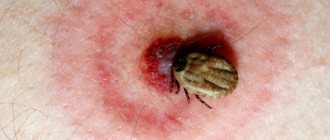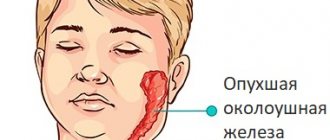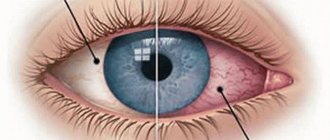Almost all viral infections have common symptoms: they always develop acutely and are accompanied by manifestations of intoxication. But each of them has its own pathogen. It lives and develops inside the human body according to its own rules, so the clinical picture necessarily contains characteristic signs that allow preliminary identification of the virus. Varicella is no exception. Knowledge of how to recognize chickenpox helps you respond correctly and prevent dangerous complications from occurring.
When did chickenpox start?
Chickenpox has been known since ancient times. For some time it was considered a mild form of smallpox, and only in 1772 was it identified as a separate disease. And in 1909, it was found that chickenpox and shingles have the same pathogen, which was later confirmed by laboratory tests. Subsequent study of the virus led to the development of a live attenuated varicella vaccine in Japan in the 1970s. The vaccine was licensed for use in the United States in March 1995.
The consequences of the chickenpox vaccine
When receiving the chickenpox vaccine, side effects are very rare. Local phenomena are more often a concern. So, when children or adults are given the chickenpox vaccine, side effects include redness and soreness at the injection site. Sometimes the general state of weakness bothers me. Slight fever may occur. Even in a completely healthy person, vaccines (including DPT and chickenpox vaccinations) can provoke unpleasant reactions in the body. The effects of chickenpox vaccination in children and adults appear 1-3 weeks after administration of the drug. The vaccine may cause allergies.
There are complications after vaccination against chickenpox (in children and adults). The risk is small, but remains. It has been established that the following are possible:
- convulsions;
- shingles;
- thrombocytopenia;
- inflammation of the brain;
- anaphylactic shock.
Within 6 weeks after receiving the vaccine, the vaccinated person is dangerous for people with very weak immunity.
What causes chickenpox and how can you get infected?
Varicella zoster virus (VZV) is a virus that causes chickenpox and belongs to the herpesvirus family. Like other viruses in this group, it has the ability to persist in the body after the initial infection.
After a person has had chickenpox, VZV does not leave the body but remains in the sensory nerve ganglia.
Thus, primary VZV infection leads to chickenpox, and herpes zoster is the result of reactivation of a latent infection of this virus, which is caused by decreased immunity due to various circumstances (hypothermia, stress, etc.) or concomitant diseases that are accompanied by immunodeficiency (malignant blood diseases, HIV etc.). Due to the presence of this property, the chickenpox virus belongs to the group of pathogens of slow infections. It is worth noting that the chickenpox virus itself has an immunosuppressive property.
VZV is thought to have a short survival time in the environment. All herpes viruses are sensitive to chemical and physical effects, including high temperature.
The source of infection is a person with chickenpox or herpes zoster. The virus is contained on the mucous membranes and in the elements of the rash. A patient is considered contagious from the moment the rash appears until crusts form (usually up to 5 days after the last rash).
The chickenpox virus is highly contagious, meaning it is very likely to be transmitted through respiratory droplets or direct contact with characteristic skin lesions of an infected person. This is due to the fact that most of the population becomes ill in childhood.
80-90% of cases occur under the age of 14 years. Chickenpox is also characterized by high susceptibility (90-95%).
Most countries tend to have higher incidence rates in urban areas (700-900 per 100,000 population) and significantly lower rates in rural areas. The epidemiology of the disease differs in different climatic zones, for example, a significant difference is observed in temperate and tropical climates. The reasons for these differences are poorly understood and may relate to properties of the virus (which are known to be heat sensitive), climate, population density, and exposure risk (eg, daycare or school attendance, or number of siblings in the household).
Why is chickenpox so relevant in the modern world?
The relatively mild course and low mortality rate have long been the reason for an extremely calm attitude towards this infection.
However, at the moment, as a result of numerous studies, it has been established that the pathogen can affect not only the nervous system, skin and mucous membranes, but also the lungs, digestive tract, and genitourinary system.
The virus has an adverse effect on the fetus when the disease occurs in pregnant women. It is worth remembering that the mother can transmit the infection to the fetus if she is sick with chickenpox or herpes zoster (the virus can penetrate the placenta throughout pregnancy).
Preventive measures in adults
You can become infected with chickenpox only if you did not have it in childhood. The disease rarely develops again and only when the immune system is severely weakened.
The Zoster virus remains in the human body forever. Its main habitat is nerve endings. When favorable factors appear (decreased immune system, taking potent drugs, oncology), it begins to actively multiply, manifesting itself on the human body. Repeated infection with chickenpox is called shingles. The disease is accompanied by joint pain and severe rashes. If treated incorrectly or untimely, it becomes chronic.
Preventive measures for adults who have not had chickenpox are as follows:
- Isolate the patient in another room.
- Carry out quartzing regularly, reducing the risk of spreading the virus. Use the device strictly according to the instructions.
- Wear a medical mask during epidemics.
- Do not allow an infected person to use your personal hygiene products.
- The laundry of a sick family member should be washed separately, and after drying, be sure to iron it.
- Take multivitamins and eat a healthy and balanced diet.
- Lead a healthy lifestyle, give up bad habits.
- Regularly ventilate and disinfect the premises.
From the moment a brown crust forms at the site of the blisters, the person becomes harmless to society.
Today, medicine offers patients a vaccine against the Zoster virus. A weakened herpes pathogen is injected intramuscularly into the body, causing a milder form of the disease. After which immunity to chickenpox is formed.
What are the manifestations of chickenpox (chickenpox)?
The chickenpox virus enters through the respiratory tract and conjunctiva. It is believed that the virus multiplies in the mucous membrane of the nasopharynx and regional lymph nodes.
The initial entry of the virus into the blood occurs a few days after infection and contributes to the entry of the virus into the epithelial cells of the skin, where further reproduction of the virus and corresponding skin changes occur.
Then a secondary entry into the blood . It should be remembered that not only the skin epithelium can be affected, but also the mucous membranes of the gastrointestinal tract, respiratory tract, and genitourinary system. Considering that the virus is tropic to nervous tissue, degenerative and necrotic changes can develop in the nerve ganglia, sensory nerve roots and spinal cord.
Incubation period . The period from the virus entering the body to the onset of clinical manifestations ranges from 5 to 21 days after exposure, usually 1-2 weeks. The incubation period may be longer in immunocompromised patients.
Infected people may have a mild prodrome that precedes the onset of the rash. In adults, this may be 1 to 2 days of fever and malaise, but in children, a rash is often the first sign of illness.
The onset is most often acute . Fever lasts 2-7 days, longer in severe cases. Patients complain of an itchy rash, body aches, decreased appetite, sleep disturbance, and headache. Nausea and vomiting may occur.
The first elements of the rash appear on the face and torso, and then on the scalp and extremities; The greatest concentration of lesions is on the torso with the appearance of rashes within 4-6 days. In this case, elements of the rash are present at several stages of development (for example, redness and papules can be observed simultaneously and in the same area as vesicles and crusts).
The rash can also occur on the mucous membranes of the oropharynx, respiratory tract, vagina, conjunctiva and cornea.
The rash elements usually have a diameter of 1 to 4 mm. Vesicles (bubbles) are superficial, single-chambered and contain clear liquid, surrounded by a red rim. Over time, they dry out and turn into crusts, after rejection of which temporary pigmentation and occasionally small scars remain.
The number of rash elements ranges from single to multiple. The vesicles may rupture or fester before they dry out and take on a crusty appearance. The rash is accompanied by severe itching.
In 20-25% of patients, rashes may occur on the mucous membranes of the mouth and gums. Usually they quickly open, form erosions and are accompanied by pain, burning and increased salivation.
About 2-5% of patients have elements of a rash on the conjunctiva.
Also, with chickenpox, as a rule, the lymph nodes (submandibular, cervical, axillary, inguinal) become enlarged.
Recovery from the initial chickenpox infection usually results in lifelong immunity. But recently, cases of recurrent chickenpox have become increasingly common. This is not common in a healthy person, and most often occurs in immunocompromised individuals.
What complications can occur with chickenpox?
The disease is usually mild, but complications may occur, including bacterial infections (eg, bacterial skin lesions, pneumonia) and neurological infections (eg, encephalitis, meningitis, myelitis), which can be fatal.
Secondary bacterial skin infections , which are caused by streptococcus or staphylococcus, are the most common cause of hospitalization and outpatient medical visits. Secondary infection with invasive group A streptococci can cause abscesses and cellulitis.
Pneumonia after chickenpox is usually viral, but can also be bacterial. Secondary bacterial pneumonia is more common in children under 1 year of age. It is characterized by an increase in temperature up to 40⁰C, an increase in pallor and cyanosis of the skin, the appearance of a substernal dry cough and shortness of breath. Patients can take a forced position in bed.
Damage to the central nervous system in chickenpox ranges from aseptic meningitis to encephalitis. Cerebellar involvement followed by cerebellar ataxia is the most common presentation of central nervous system disorders but usually has a positive outcome.
Encephalitis is one of the most dangerous complications of chickenpox (10-20% of cases are fatal). This complication manifests itself as headache, nausea, vomiting, convulsions and often leads to coma. Diffuse brain involvement is more common in adults than in children. Chickenpox meningitis may occur together with encephalitis or independently .
Rare complications of chickenpox include Guillain-Barré syndrome, thrombocytopenia, hemorrhagic and bullous chickenpox, glomerulonephritis, myocarditis, arthritis, orchitis, uveitis, iritis and hepatitis.
Once infected, the virus remains hidden in nerve cells and can be reactivated, causing a secondary infection, herpes zoster. It usually occurs in adults over the age of 50 or with a weakened immune system and is associated with a painful rash that can cause permanent nerve damage.
What is herpes zoster?
Herpes zoster (shingles) occurs in people as a manifestation of the reactivation of a latent infection caused by a virus that was in the nerve ganglia after chickenpox. The localization of subsequent rashes will depend on which nerve ganglion the virus (VZV) was in a latent (dormant) state.
Localization of the rash in case of damage to the trigeminal nerve ganglion - on the scalp, in the forehead, nose, eyes, lower jaw, palate, tongue; if the virus is present in the spinal ganglia - on the neck, trunk, upper and lower extremities.
Features of the rash with herpes zoster are:
- vesicles are located on the skin in groups along the corresponding nerve,
- the disease most often begins with pain, followed by redness and corresponding rashes,
- over time the pain becomes less and less,
- the process is always one-sided,
- Usually the rashes are accompanied by fever, malaise, and weakness.
How does the initial stage of chickenpox manifest?
The initial stage of chickenpox (photo 2) appears after a long incubation period. For children it is 2 weeks, and for adults the period from infection to the first symptoms can last 21 days. Chickenpox, the incubation period of which is activated after airborne contact with a sick person, begins with catarrhal phenomena. These are similar to the symptoms of a respiratory infection. The only difference is the specific acne associated with chickenpox.
Acne with chickenpox
It is acne with chickenpox (photo 3) that is a characteristic sign of this disease. The causative agent is the herpes virus, which enters the mucous membranes of the respiratory tract. The onset of chickenpox at this stage goes unnoticed by the patient. This is the period of reproduction and accumulation of the pathogen. After the virus penetrates the regional lymph nodes and the circulatory system, the initial stage of chickenpox appears.
What methods exist for diagnosing chickenpox?
Usually the diagnosis is made on the basis of the clinical picture and an objective examination of the patient.
To confirm the diagnosis using laboratory methods, blood, cerebrospinal fluid, and the contents of vesicles and pustules are taken. Microscopy is used as an oriented method.
In modern practice, serological diagnostic methods are used (ELISA, RSK, RNGA, RIA). In this case, blood is taken twice: at the beginning of the disease and during the period of convalescence. The reaction is considered positive if the antibody titer increases 4 times or more.
It is worth noting that ELISA and PCR are the most commonly used. There is also a method for cultivating the virus, but due to labor intensity and high costs, it is not currently used.
How to treat chickenpox?
Patients with an uncomplicated course are most often treated at home. Elements of the rash are treated with a concentrated solution of potassium permanganate. The oxygen that is released as a result of this prevents the addition of a secondary infection and also reduces itching. For a small number of rashes, you can use brilliant green.
Only in severe or complicated cases is treatment directed at the pathogen necessary. These are drugs acyclovir, valacyclovir, famciclovir, which can only be taken after consulting an infectious disease specialist or family doctor. Antiviral treatment is mandatory for herpes zoster. Local application of acyclovir ointments is also possible.
If the itching is severe, those with chickenpox should take antihistamines. For severe pain in patients with herpes zoster - analgesics. If there is a high temperature and severe intoxication, detoxification therapy (intravenous administration of certain solutions) is indicated. Immunoglobulin is indicated for persons who have a reduced level of immunity.
What does chickenpox look like?
The main symptom by which you can understand what chickenpox looks like (photo 4) is a rash. At first, these are ordinary red spots of small size and round shape. The early stage of chickenpox first appears on the head and abdomen. As a result, the spots turn into papules (this is what pimples with chickenpox are called). The center of the area of reddened skin rises, and a blister filled with clear liquid forms.
The chickenpox rash (photo in the gallery) subsequently transforms from a papule into a vesicle with purulent contents. Itching appears, which accompanies the process of opening acne. The next sign of how chickenpox manifests itself is ulceration of the papule with the formation of a scab or other crust. But this happens at a later stage.
How to prevent chickenpox?
Chickenpox can be prevented through vaccination. Specific prevention is carried out with live vaccines from a weakened varicella zoster virus (for example, the Belgian vaccine Varilrix). Vaccination is especially recommended for young children, and in the United States for the elderly, to prevent herpes zoster and postherpetic neuralgia.
In clinical trials, it was found that individuals who were vaccinated were either not susceptible to chickenpox or experienced it in a very mild form.
Chickenpox vaccines
Vaccination is necessary for those categories of people who have reduced immunity and, as a result, a high risk of severe and complicated course of the disease. These include the following categories:
- persons with malignant diseases,
- HIV-infected,
- those groups of people who have severe chronic pathology,
- patients taking glucocorticosteroids.
Vaccination indicated:
- for preventive purposes, especially recommended for high-risk categories: - routine vaccination at the age of 12-15 months, - routine second dose at the age of 4-6 years.
- for emergency prevention of those who have not had chickenpox and have not been vaccinated, but are in contact with patients.
The minimum interval between doses of varicella vaccine is 3 months for children under 13 years of age.
Although single-dose programs are effective in preventing severe varicella disease, as demonstrated by a study in Australia (one of the few countries to include varicella vaccination as part of its national immunization program), evidence suggests that it is not necessary to interrupt transmission of the virus. two doses are required. Emerging school outbreaks and high rates of chickenpox, although usually not severe, have prompted some countries to implement a two-dose vaccination schedule.
Vaccination is the most effective medical intervention ever invented by man.
Used materials
- https://www.cdc.gov/vaccines/pubs/pinkbook/varicella.html - etiology, pathogenesis, clinical features, prevention of chickenpox
- https://www.who.int/immunization/sage/meetings/2014/april/5_The_potential_impact_Varicella_vaccination_Low_Middle_Income_Countries_feasibility_modeling.pdf?ua=1&ua=1 – vaccination for chickenpox
- https://www.who.int/immunization/diseases/varicella/en/ - about the epidemiology of chickenpox and herpes zoster
- https://www.who.int/bulletin/volumes/92/8/13-132142/en/ - research on the effectiveness of vaccination against chickenpox and herpes zoster in Australia.
- https://www.who.int/immunization/position_papers/varicella_grad_effectiveness_2_doses.pdf?ua=1 - about the effectiveness of vaccination against chickenpox.
- https://www.who.int/wer/2014/wer8925.pdf?ua=1&ua=1 – epidemiology, diagnosis, treatment, some positions on vaccination for chickenpox and herpes zoster.
- Vozianova Zh. I. Infectious and parasitic diseases: In 3 volumes - K.: Health, 2000. - T. 1. - 904 p.
- Golubovskaya O. A. Infectious diseases. - M.: VSV "Medicine", 2012. - 728 p. + 12 s. color. on
Author: Anastasia Lishnevskaya, infectious disease doctor Source: MMK Formed
Preparing for vaccination
- Knowing the name of the chickenpox vaccine approved for administration in our country to adults and children (Okavax, Varilrix), and understanding why immunization is important, you can properly prepare for the event. First, they go to the doctor, find out whether they need an injection, and choose the appropriate medicine.
- Sometimes a doctor's consultation is needed because the child is sick. After chickenpox, you can get vaccinated after a month and a half or later. The exact waiting period will be determined by the attending physician. Medical advice from vaccinations after chickenpox is due to temporary weakness of the immune system.
- At the appointment, the doctor will also tell you how long the chickenpox vaccination is delayed for children and adults if the person in need has a cold, flu or something else that causes fever. The procedure is prescribed after complete recovery.
Etiology
The causative agent of the disease is herpes virus type 3, which contains a DNA molecule and a lipid membrane, which ensures its lifelong residence in the spinal roots. The virus is capable of replication only in the human body. It quickly penetrates nerve cells and destroys them, forming intracellular inclusions.
Varicella Zoster is a fairly large microbe that can be seen with a regular light microscope. It is detected in the serous exudate of vesicles from the 3rd day of the disease. The virus has weak resistance to external factors and is quickly inactivated by heating and cooling, exposure to ultraviolet radiation and disinfectants.
Stages of the disease
There are 3 main stages of the disease:
Stage 1
Formation of pink flat spots. They don't cause any concern.
Onset of the disease: photo
Stage 2
Literally after a few hours, the rashes become more numerous, they increase in size and turn into bubbles, which contain a clear liquid inside.
Photo
The vesicles spread throughout the body, with the exception of the palms and soles, and begin to itch. This leads to the formation of scratches on the skin.
Stage 3
The blisters dry up approximately on the 3rd day of illness, and a reddish crust forms. Every 1-2 days new rashes appear on the skin.
At the height of the disease, various elements of the rash are observed at different stages of their development.
Symptoms of chickenpox in children
The period of rash lasts from 4 to 8 days, after which recovery begins. The yellow-brown crusts that appear in place of the bubbles disappear after about a week, leaving no trace. But this is only if the mother helped the baby survive a period of severe itching - she prevented scratching and infection from getting into the wound.
Premature tearing of the cortical layer can lead to the appearance of a “pockmark” that can remain for life.
Among the main symptoms of chickenpox are the following:
- Sharply increasing body temperature (up to 40 degrees C);
- Pain in the head, limbs and muscles;
- Irritability, tearfulness of the baby, severe weakness and apathy;
- Unreasonable anxiety, sleep disturbances;
- Decreased appetite and even refusal to eat;
- The appearance of characteristic rashes of spots and blisters on the entire surface of the body, which do not affect only the surfaces of the palms and soles.
These signs appear 1-2 days before the rash appears on the child’s body. He may lose his appetite and be in a bad mood. Sometimes this period is absent, and parents simply notice a rash on the skin.
All stages of chickenpox in children follow each other sequentially and are characterized by certain typical symptoms.
Itching is the most unpleasant symptom of chickenpox. During the period of formation, opening, and growth of blisters, the body itches, children suffer from unbearable itching. It’s difficult to explain to a one-year-old baby why he shouldn’t comb or pick off dried crusts.
A vicious circle appears:
- the patient is actively itching;
- serous fluid pours out;
- the virus spreads to new areas;
- further infection occurs;
- Sometimes there are 100 or more itchy blisters on the body.
Take note:
- It is important to relieve the itching, otherwise the child will definitely scratch the scabs. If the surface has not yet completely dried, a deep scar will form at the site of the bubble;
- Gradually (not in one year), many of the depressions resolve, but some of the holes remain for life.
Forms of the disease
| Form of chickenpox in children | Symptoms |
| Lightweight | Characterized by single rashes, absence of fever and poor health. Herpetic pimples appear in only 2 - 3 days. Doctors suggest that the mild form of the disease occurs due to strong immunity or hereditary resistance to the virus. |
| Average | The body becomes covered with spots characteristic of chickenpox, the patient develops a high temperature and symptoms of intoxication of the body. With moderate chickenpox, the body temperature is no more than 38 degrees C. |
| Heavy | The temperature rises sharply to 40°C, and the patient's entire body becomes covered with an itchy rash. The rashes can merge into a continuous painful crust, intense itching leads to psycho-emotional breakdowns and prevents you from sleeping at night. All the symptoms of severe intoxication of the body are present:
|
Incubation period
How many days is chickenpox contagious? For 1-3 weeks, which is how long the incubation period lasts, the chickenpox pathogen does not bother the child and does not manifest itself in any way. Considering the “volatility” of the virus, which easily spreads over a distance of twenty meters, it is possible to become infected even through ventilation openings.
The most contagious disease is considered to be in the active phase, which begins 2 days before the appearance of the first characteristic rash. The disease enters the inactive phase five days after the last blisters appear on the body.
At this time, the virus stops spreading, the rashes dry out and heal, and the child recovers. Treatment of chickenpox must take place under quarantine conditions; the child is isolated from other children for the entire duration of the illness.
According to doctors' recommendations, quarantine lasts on average about 10 days from the moment of the first skin manifestations.
During the entire incubation period, a child infected with chickenpox may look absolutely active and healthy. However, even without any external signs of the disease, he already poses a threat to others.
Treatment
Children easily get chickenpox. Complications in the form of suppuration of a rash, abscesses, gangrene, pneumonia or sepsis develop in 5% of patients. Possible damage to the kidneys, liver and heart.
Mild forms of chickenpox are treated with antipyretics and brilliant green, which is applied to the rash. In all other cases, complex treatment of the disease is indicated, including etiotropic, pathogenetic and symptomatic therapy.
Etiotropic treatment of the pathology is aimed at destroying the virus, which, after recovery, remains in the body and can subsequently cause shingles. Therefore, antiviral therapy is simply necessary. Most viruses will die or remain inactive for a long time.
- Patients are prescribed antiherpetic drugs for oral administration - Zovirax, Isoprinosine, as well as drugs for topical use - Acyclovir ointment. "Valcicon" and "Devirs" are modern and effective drugs for the treatment of chickenpox.
- Immunomodulators – interferon preparations, “Bronchomunal”, “Amiksin”.
- Immunostimulants – “Derinat”, “Imudon”, “IRS-19”, “Neovir”.
- For secondary bacterial infection, patients are prescribed 3rd generation cephalosporins.
Pathogenetic therapy
- Experts recommend that patients eat frequently, in small portions, excluding fatty meat products from the diet and enriching it with vitamins. A vegetable-dairy diet and frequent exposure to fresh air are recommended.
- Bed rest and abundant alkaline drinking are indicated for patients with severe pathology.
- Acne with chickenpox must be smeared with various external means - ointments, lotions, solutions. Elements of the rash are usually treated with brilliant green. Rubbing the skin with vinegar diluted 1 to 1 with boiled water and sprinkling with talcum powder will help reduce itching. Treatment of the oral mucosa consists of rinsing with furacillin. For conjunctivitis, apply Acyclovir ointment and drop albucid into the eyes.
- Multivitamins.
Symptomatic treatment of chickenpox involves using:
- Antipyretic drugs from the group of ibuprofen and paracetamol - “Nurofen”, “Ibuklin”,
- Probiotics – “Linex”, “Bifiform”,
- Enterosorbents – “Smecta”, “Polysorb”,
- Mucolytics – “Ambrobene”, “ACC”,
- Antiplatelet agents – “Cavinton”, “Actovegil”,
- Anti-inflammatory drugs – “Erispal”,
- Antihistamines - “Loratodine”, “Cetrin”.
Ultraviolet irradiation accelerates the process of crusts falling off.
To eliminate itching, you can use pine baths. Lesions on the mucous membranes and skin are lubricated with sea buckthorn oil or rosehip oil.
If your child has any of the following symptoms, call a doctor immediately:
- If your body temperature rises above 37 degrees and stays at this level for several days,
- If the number and size of the rashes increase, they change, become bluish or bloodshot,
- If rashes appear on the mucous membrane of the oral cavity, conjunctiva of the eyes, genitals,
- If chickenpox is atypical,
- If you experience a cough, runny nose, or nosebleeds,
- If breathing is impaired, diarrhea and vomiting, drowsiness, and convulsions occur.
Many parents are interested in the question: is it possible to bathe a child with chickenpox? Experts are still arguing about this. If a child has a high body temperature, there are ulcers on the skin or complications have developed, then it is better to avoid bathing until the acute period subsides. If the child’s condition is satisfactory, water procedures are necessary. Dirt and sweat getting on the rash will cause additional suppuration and increase the itching. You should bathe in warm water without using a washcloth.
Diagnostics
Diagnostic methods for studying patients with chickenpox:
- Virological method: using electromicroscopy, chickenpox virus is isolated from the contents of the vesicles.
- Serological study: complement binding reaction and passive hemagglutination. Enzyme immunoassay - determination of antibodies to the varicella zoster virus in the patient's blood. Class M immunoglobulins indicate the acute period of the disease and appear during the incubation period. Immunoglobulins G appear at 2 weeks and persist for life, they protect the human body from re-infection.
- The polymerase chain reaction is the basis of the genetic method and is aimed at detecting the DNA molecule of the virus.
- Immunological examination.
- General clinical tests include: complete blood count, general urine test.
These diagnostic methods are not always used. Specialists easily make a diagnosis, taking into account only the patients’ complaints and the data obtained during the examination. Tests are prescribed when complications develop.
Pathogenesis
Varicella Zoster, together with inhaled atmospheric air, enters the human body and settles on the surface of the ciliated epithelium of the respiratory organs. Accumulating in epithelial cells, the microbe penetrates the circulatory and lymphatic systems. This period is manifested by a pronounced intoxication syndrome: fever and other nonspecific symptoms. With the blood flow, microbes are spread throughout the body and become fixed in skin cells, causing local manifestations of pathology. Vesicles with chickenpox form after passing through 3 stages of development: spot - papule - vesicle.
Microbes destroy epithelial cells, cavities with serous contents are formed. The bubbles burst, and in their place crusts form, which fall off over time.
In persons with reduced immunity, complicated forms of pathology develop, and secondary infection of the rash often occurs. Chickenpox contributes to the exacerbation of chronic diseases.











